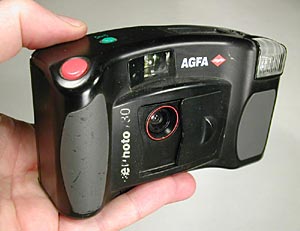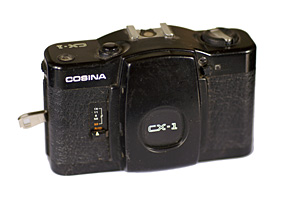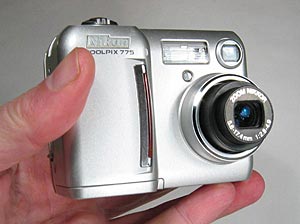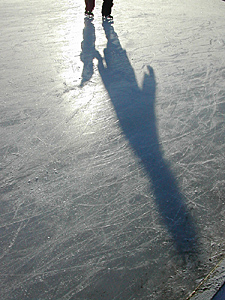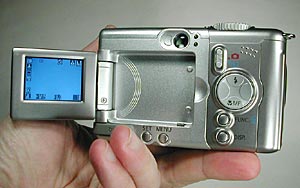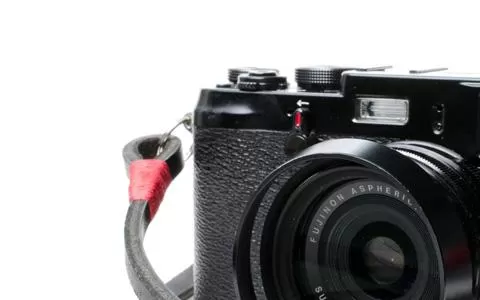The compact digital P&S-cameras are a fantastic supplement to the DSLR -- provided you choose the right one.
My first ever digital camera was a point-and-shoot (P&S) from Agfa of all companies. It took some lousy pictures and was big as a barndoor compared to today's cameras. It ran on AA-batteries -- or rather walked -- and took pictures in a whopping VGA-quality (That's 640*480 pixels or an astounding third of a magapixel!). But it took digital pictures, which was the whole case. Directly from the camera to the computer was small revolution back when all photography meant developing and scanning.
The camera was called Agfa ephoto 780, and may not have been anything compared to the camera in today's cell phones, but it did break the ice for digital imaging in my life. I still have some pictures taken with the camera. They're horrible!
But it cannot be denied that the Agfa was a digital camera with an LCD-screen on the backside, images that were immediately ready and most of what we find in a modern digital compact P&S-camera.
Film P&S
Many years before the Agfa, I had bought a small Cosina compact film camera -- the CX-1 -- which was a fine camera for the money. It was basically manual, but had some focus dials and could take a flash, which I liked. It had a fixed focal length semi-wideangle lens and could take some nice pictures. It was pretty durable, and still works today, should I want to shoot some film full manual.
But a pro photographer friend of mine had bought an Olympus μ (mju), which was splashproof and had a prime 35mm semi-wideangle lens. That seemed like a very good choice for a guy like me who spent a lot of time in and by the water.
I would have bought this little camera if it was not for the price. Just a little beyond what I wanted to spend back then. So I bought an earlier and less expensive model, the AF-Mini, and used it for a couple of years as my P&S-camera, just carrying it in a pocket, always ready. It was a nice construction with a sliding door to protect the lens and a small built-in flash for fills.
My first real DP&S
When digital compact cameras became more common I started scouting around for one. My eyes fell on the Nikon Coolpix line, but the really nice ones -- the CoolPix 950 and later the 995 -- were way over my budget, so I opted for a Nikon CoolPix 775. This was a small 2 megapixel camera with good facilities for it's price and year, and it had one thing, which I wanted: macro. I shot a lot of pictures with this little darling, and even though 2 megapixels sounds way too little to do anything sensible by present standards, the Nikon delivered enough good pictures to pay for itself time over.
The Nikon was replaced by a Canon Powershot A80, which I still have and use, although it does have some severe signs of wear and tear. That camera is closing in on 10,000 images, and with a bit of luck it will turn this sharp corner.
The blessing of P&S
DP&S-cameras are extremely worthy supplements to DSLR's, mostly because of their size. The compact shape of these cameras enables you to carry them with you easily, and that of course will put you in situations where you can shoot more freely. Much good can be said about SLR's, but being lightweight is not one of them. If you like good glass and a vertical grip, which I do, you are looking at at least one kilo or a couple of pounds in weight, possibly more. The compact cameras usually weigh a few hundred grams, so comparison isn't really possible.
In spite of the superiority of the DSLR, I am still impressed by the quality that can be obtained with the compact cameras. A few of my friends have bought Canon's PowerShot A620, which is a 7 megapixel camera built much like the A80 and its kins. Rumour has it that it's Canon's last camera with a flip-out LCD, so go get one before they're sold out!
The A620 can produce some stunning quality and is one impressing little camera. And it is of course way less expensive than the A80 was when I bought it.
It's the way of the digital world. Prices fall, quality gets better...
